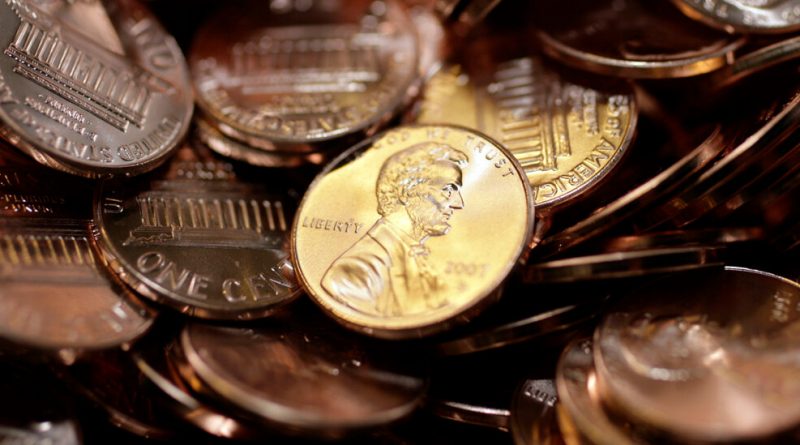New Push to Get Rid of Pennies in Pandemic Coin Shortage
[ad_1]
A nationwide coin shortage caused by the coronavirus pandemic has revived a debate: Is now the time to eliminate the penny?
During lockdowns, consumers have stayed home and avoided emptying their piggy banks of coins in exchange for paper money. Shoppers have also opted to rely on credit and debit cards instead of touching cash.
With coins in short supply, the Federal Reserve formed a U.S. Coin Task Force, which will make recommendations on ways to cope with the shortage.
The shortage has led to renewed discussions about the fate of the penny, which has seen its purchasing power fall because of inflation while its production costs have risen.
Sunde White, a 46-year-old small-business owner in San Francisco, said the coin shortage was one more reason to retire the penny.
“I hate pennies,” said Ms. White, adding that they are so useless that she usually throws them on the ground when she gets them back as change. “They’re so stupid.”
Even before the coin shortage, she already priced her greeting cards and coloring books at 50 cents or $1 increments for sales at festival stands to save the inconvenience of having to use pennies, she said.
Given the economic crisis facing the United States, the government could use the money it would save by ending the production of pennies for more important causes, she said. The United States Mint manufactured more than seven billion pennies in the 2019 fiscal year, at loss of nearly $70 million.
Each penny costs about 2 cents to produce, according to a 2019 report by the U. S. Mint. Pennies accounted for 59 percent of the 12 billion coins the Mint manufactured last year.
But the movement to eliminate pennies faces significant opposition.
Some people support the penny for sentimental reasons. It was one of the first coins made by the Mint after it was established in 1792.
Another reason, offered by Americans for Common Cents, an advocacy group that provides research for Congress on the value of the penny, is particularly pertinent during a pandemic: Older pennies are made mostly of copper, which is antimicrobial.
Penny proponents also argue that eliminating pennies would amount to a one-cent sales tax for consumers because prices that end in 99 cents are common.
Robert Whaples, an economics professor at Wake Forest University, said his research, which examined data from a chain of convenience stores, showed that customers ended up breaking even over time because prices were rounded down as much as up, considering people buy multiple items and when accounting for tax.
“Right now, with the coin shortage, is a good opportunity to seize the issue,” he said, arguing that pennies should be eliminated from circulation.
The argument for getting rid of the penny, said N. Gregory Mankiw, an economics professor at Harvard University, has only gotten stronger over the decades, as inflation has suppressed the penny’s purchasing power. Still, he said he did not think any changes would happen soon.
“Of all the issues we face, this is probably not a front burner one at this moment,” Professor Mankiw said.
Congress, rather than the Treasury or the Federal Reserve, has the authority to decide whether to retire the coin, and past legislative attempts have struggled to gain traction. The biggest change was in 1857, when Congress discontinued the half cent, which was unpopular at the time.
Jim Kolbe, a Republican of Arizona, introduced legislation in the early and mid-2000s to eradicate the penny while he was in Congress. He said his efforts were stymied because Dennis Hastert, then the House speaker, and other representatives from Illinois opposed the legislation, in part because the penny since 1909 has carried the image of Abraham Lincoln, who spent eight years in the Illinois Legislature.
But now, when there is a shortage of coins, it makes no sense for the Mint to spend money to produce more pennies, he said.
“It’s astonishing to me that we haven’t changed in all this time, but this pandemic, and the shortage of coins, may be just the thing that does it,” Mr. Kolbe said.
